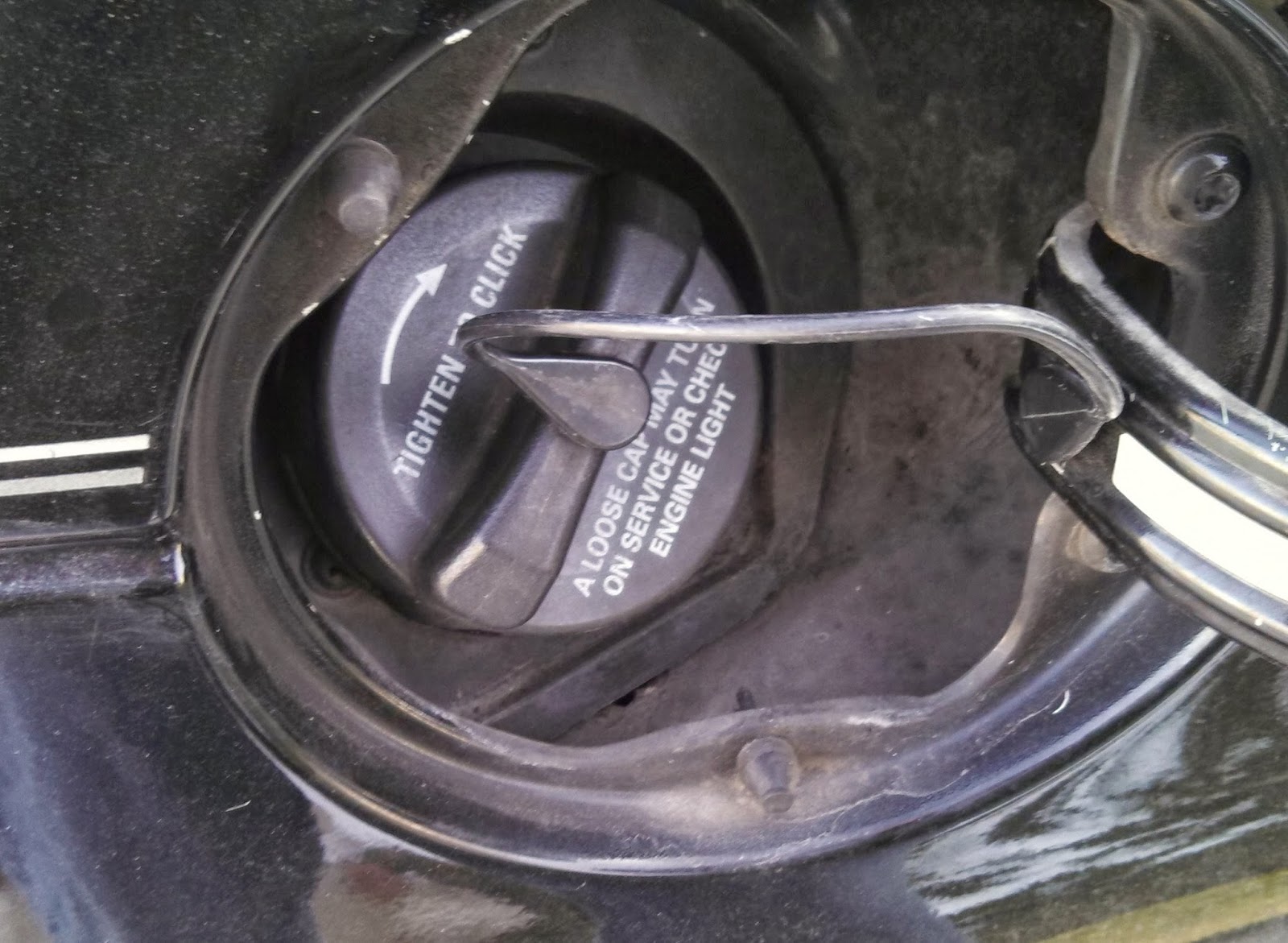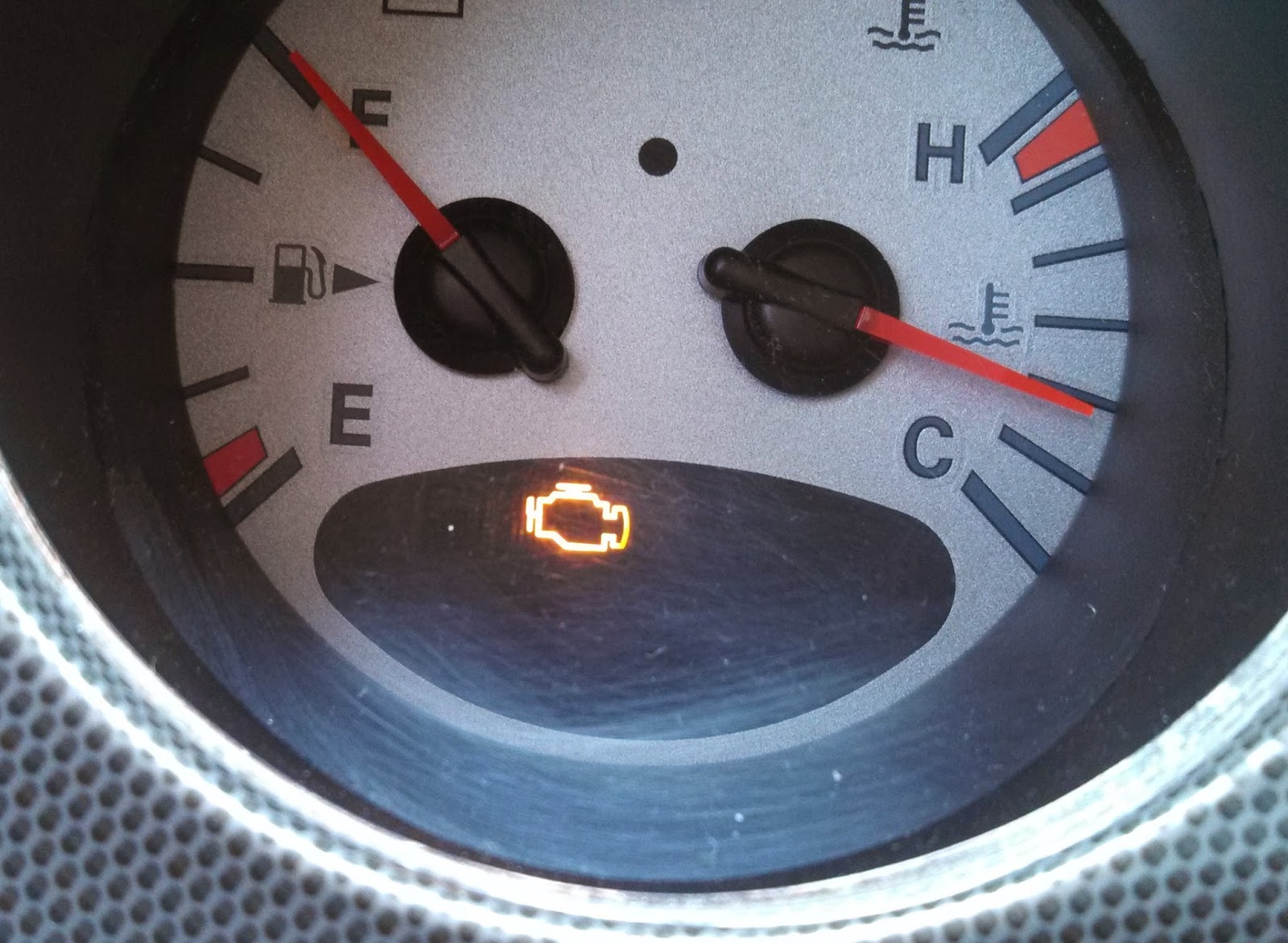Gas Cap & Check Engine Light: A Simple Fix?
That dreaded yellow glow on your dashboard – the check engine light – can send shivers down any driver's spine. Imagining costly repairs and complicated diagnostics is a natural reaction. But what if the cause is something as simple as your gas cap? Surprisingly, a loose, damaged, or missing gas cap is a frequent trigger for that ominous light.
This seemingly minor component plays a crucial role in your vehicle's emissions system. It seals the fuel tank, preventing gasoline vapors from escaping into the atmosphere. These vapors are harmful pollutants, and modern vehicles are equipped with sophisticated systems to capture and manage them. A faulty gas cap disrupts this process, triggering the check engine light.
The introduction of emissions control systems in the 1970s coincided with the evolution of the gas cap from a simple vented cap to a more complex, sealed component. As environmental regulations tightened, the gas cap became increasingly important in maintaining a vehicle's emissions integrity. Today, a properly functioning gas cap is essential for both environmental protection and optimal vehicle performance.
Ignoring a check engine light related to a faulty gas cap isn't advisable. While it might seem like a minor issue, a loose gas cap can lead to decreased fuel efficiency as gasoline evaporates. Furthermore, a persistent leak can trigger further issues with the evaporative emissions control system, potentially leading to more expensive repairs down the line.
Addressing a gas cap-related check engine light is often straightforward. First, check if the cap is loose or damaged. If it's loose, tighten it securely. If it's damaged, replace it with a new cap designed specifically for your vehicle's make and model. After replacing or tightening the cap, drive your car for a few days. In many cases, the check engine light will turn off on its own once the system detects the issue has been resolved.
One benefit of addressing a loose or faulty gas cap is improved fuel economy. By preventing fuel evaporation, you can save money at the pump. Another benefit is preventing further damage to the evaporative emissions control system, which can save you from costly repairs. Finally, ensuring your vehicle's emissions system is functioning correctly contributes to a cleaner environment by reducing harmful pollutants.
Action Plan for Gas Cap Check Engine Light:
1. Inspect the gas cap: Check for cracks, damage, or if it's loose.
2. Tighten or replace: Tighten the cap securely. If damaged, replace it with the correct cap for your vehicle.
3. Monitor the light: Drive for a few days and see if the light turns off.
4. Seek professional help: If the light persists, consult a mechanic.Troubleshooting Checklist:
* Is the gas cap visibly damaged?
* Is the gas cap securely tightened?
* Has the check engine light remained on after tightening/replacing the cap?Recommendations: Check your car's owner's manual for specific recommendations on gas cap replacement. Online forums specific to your car model can also offer helpful advice.
Advantages and Disadvantages of Replacing Your Gas Cap
| Advantages | Disadvantages |
|---|---|
| Improved Fuel Economy | Cost of a new cap (relatively minor) |
| Prevents Further Damage | Potential for incorrect cap installation (rare) |
| Reduced Emissions |
Best Practices:
1. Always tighten the gas cap until you hear a click.
2. Inspect the gas cap regularly for damage.
3. Replace the gas cap every few years as part of routine maintenance.
4. Don't overtighten the gas cap, as this can damage it.
5. Purchase a gas cap specifically designed for your vehicle.FAQs: 1. Will a loose gas cap always trigger the check engine light? Not always, but it's a common cause. 2. Can I drive with a loose gas cap? Yes, but it can decrease fuel efficiency and potentially damage the emissions system. 3. How much does a new gas cap cost? Typically between $10 and $30. 4. Can I use any gas cap on my car? No, use one designed for your specific make and model. 5. How do I know if my gas cap is the reason for the check engine light? A diagnostic code reader can pinpoint the issue. 6. What if the light stays on after replacing the gas cap? There might be another issue; consult a mechanic. 7. How often should I replace my gas cap? Every few years or as recommended in your owner's manual. 8. Can overtightening the gas cap cause problems? Yes, it can damage the cap and the fuel system.
Tips & Tricks: Keep a spare gas cap in your car for emergencies. When refueling, always double-check that the cap is securely tightened.
In conclusion, a seemingly insignificant component like the gas cap can play a surprisingly important role in your vehicle's performance and environmental impact. Addressing a gas cap-related check engine light is often a quick, inexpensive fix that can save you money on fuel, prevent further damage to your vehicle's emissions system, and contribute to a cleaner environment. Taking proactive steps like regular inspection and timely replacement can prevent future headaches. Don't ignore that glowing check engine light – a simple check of your gas cap might be all it takes to extinguish it and ensure your car is running smoothly and efficiently. Taking care of this small detail can make a big difference in your car’s health and your wallet in the long run. If you’re unsure, consulting a mechanic is always a good idea for peace of mind and to address any underlying issues.
Celebrating culture and connection the power of hari raya idul fitri posters
Embrace autumn creativity fall craft ideas with instructions
Unlocking creative character design gacha outfit inspiration for boys












